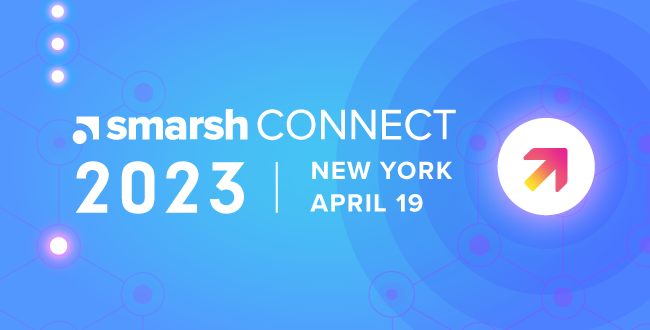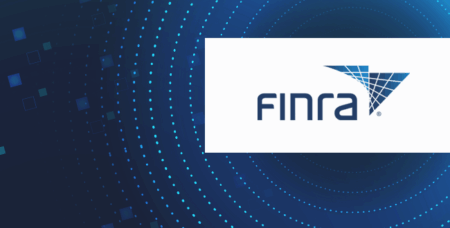SmarshCONNECT 2023: The Year of Agile Compliance
Firstly, for our customers and partners that joined us in NYC: thank you for sharing your time and your highly valuable insights. We really appreciate your collaboration and alignment. For those who were not able to join us, I’m sharing some of the key takeaways from the day that we’ll continue to explore over the coming weeks and months.
Despite us becoming comfortable, productive and adjusted to a hybrid work model, there is nothing like gathering face-to-face. For this group of compliance and technology executives, the world is a much different place than nine months ago when we last gathered in New York. We’ve seen a significant amount of market volatility, an unprecedented focus from regulators on digital communications as well as the explosive growth of ChatGPT. As never before, financial services firms are hyper focused on doing whatever they can to stay agile and responsive.

Central to that strategy is the critical role of digital communications. Companies are now dealing with multiple petabytes of communications data. This data comes from an increasingly diverse set of sources, from multi-modal chats to voice, video, and now embedded artificial intelligence (AI) that require the latest in modern, scalable and flexible infrastructure.
Mobile communications continue to drive business — and risks
Organizations recognize the central role of mobility in business. Some have corporate-issued devices, some continue with BYOD strategies, and some support a mix of both. Even mobile applications like WhatsApp and WeChat are finding a place in business communications.
However, mobility has long been a compliance gap, which now requires filling. Regulators have suggested to firms to “identify and remediate deficiencies” without offering anything further in prescriptive guidance related to the use of prohibited tools and devices.
As we’ve previously noted, policies and prohibition aren’t enough to mitigate the risks of off-channel digital communications. Firms are increasingly seeking out technology partners to automate compliance controls, rather than simply attempting to govern use of social applications via policies alone.
The current state and future of surveillance
We’ve also seen how organizations are adapting and refining the ways they're doing conduct surveillance to address the explosion of new content sources. The ability to keep up with both the variety and volume of digital communications in today’s hybrid work environments requires shifting the mindset from using multiple single-purpose applications to a modern, scalable and well-maintained infrastructure.
Having seamless surveillance workflows is simply impossible with disparate systems. However, a compliance strategy that's powered by a single, powerful system enables firms to mitigate organization-wide risks more effectively while producing previously untapped insights.
As highlighted throughout the day by our customers, these insights are needed not only to help spot the latest forms of risk, but to also serve as a true, integrated source of intelligence that can drive innovation in an AI-first world.
Our break-out discussions later in the afternoon further explored the topic of surveillance. We found that the majority of attendees shared the common goal of expanding AI-based risk coverage to address the growing variety of social, mobile and collaborative content. Our partners at FTI Consulting mentioned that they’ve seen a 400% increase in Microsoft Teams data, as well as the increased presence of non-text characters such as emojis in investigative workloads.
Regarding the hype versus reality of AI/machine learning (ML), our panelists emphasized the importance of understanding how AI is adding value and addressing a specific use case. In Smarsh’s experience, when ML is deployed, firms have seen dramatic reductions in false positive rates and more escalations, enabling 100% review vs. review of samples only.
We expect it to follow the same journey as other emerging technologies, such as predictive coding, which has already gained mass adoption. What will remain critical is to preserve agility to respond to changes in digital communications, which is dependent on processes and training more than the underlying AI technology itself.
As expected, almost every discussion ultimately turned to ChatGPT and other flavors of large language models (LLM) and reinforcement learning. While the outcomes of ChatGPT include efficiencies, reducing alerts, and lowering costs, risk assessments will continue to depend on human judgment. It’s not a scary autonomous machine that will replace humans, but it can serve as an additive tool.
Agility is improving how we work
Ultimately, how firms adapt to change is highly dependent on how effectively they can leverage digital communications to get their jobs done – independently and collectively via collaborative technologies.
And this may be one of the biggest challenges: keeping up with the ever-accelerating pace of innovation, new capabilities, and other advances that make it easier for workers to be productive wherever they are, using the tools where firms can harness and control the risk.
Our partners at Zoom and Slack highlighted some of the work they are doing to help firms achieve this objective in our collaboration break-out session. They emphasized the close coordination they maintain with our common customers to ensure that firms can capture and preserve complete and accurate records of activity on those channels as required by financial regulations.
What appears to be clear is that more firms view these technologies as the life blood of their businesses. These technological partnerships with Smarsh — along with our ecosystem alliances — are critical to ensure that firms can stay focused on innovation, growth, and deepening the relationship with their customers.
Over the next few weeks, we’ll share additional highlights of SmarshCONNECT, including our customer and partner sessions. Thanks again to our customers and partners for supporting SmarshCONNECT.
Share this post!
Smarsh Blog
Our internal subject matter experts and our network of external industry experts are featured with insights into the technology and industry trends that affect your electronic communications compliance initiatives. Sign up to benefit from their deep understanding, tips and best practices regarding how your company can manage compliance risk while unlocking the business value of your communications data.
Ready to enable compliant productivity?
Join the 6,500+ customers using Smarsh to drive their business forward.





Subscribe to the Smarsh Blog Digest
Subscribe to receive a monthly digest of articles exploring regulatory updates, news, trends and best practices in electronic communications capture and archiving.
Smarsh handles information you submit to Smarsh in accordance with its Privacy Policy. By clicking "submit", you consent to Smarsh processing your information and storing it in accordance with the Privacy Policy and agree to receive communications from Smarsh and its third-party partners regarding products and services that may be of interest to you. You may withdraw your consent at any time by emailing [email protected].
FOLLOW US